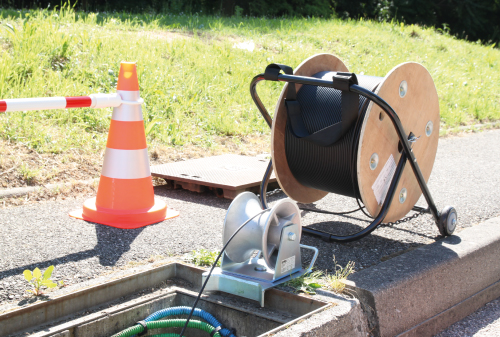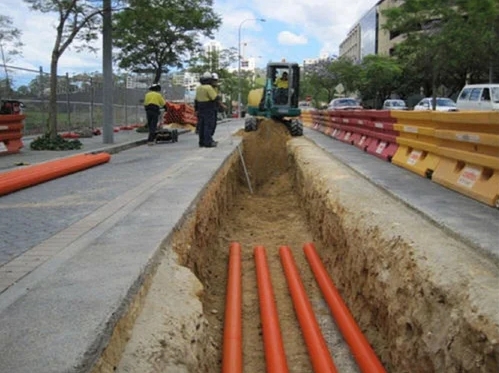Underground fiber optic cables are a vital component of modern telecommunications and data networks. They are used to transmit high-speed data, internet, telephone, and television signals over long distances with minimal signal loss. Here's an overview of underground fiber optic cables:


1.Construction: Underground fiber optic cables consist of several layers designed to protect the delicate optical fibers from environmental factors and physical damage. The typical construction includes:
Core: This is the central part of the cable where the optical fibers are housed. The fibers carry the data in the form of light signals.
Cladding: Surrounding each optical fiber is a cladding layer that helps confine the light within the core by ensuring total internal reflection.
Buffer Coating: A protective buffer coating is applied directly onto the optical fibers to protect them from moisture, abrasion, and mechanical stress.
Strength Members: These are usually aramid yarns (e.g., Kevlar) or fiberglass strands embedded within the cable to provide tensile strength and protect against stretching or breakage.
Insulating Layer: An insulating layer surrounds the core and strength members to provide electrical insulation and protect against electrical interference.
Outer Jacket: The outer jacket is a durable layer of material (such as polyethylene or PVC) that provides additional protection against moisture, chemicals, and physical damage. It also helps with cable installation and handling.
2.Installation: Underground fiber optic cables are typically installed by burying them underground in trenches or conduits. The installation process involves digging trenches, laying the cables, and then covering them with soil or other protective materials. In some cases, horizontal directional drilling (HDD) or trenchless installation methods may be used to minimize disruption to the surrounding area.
3.Protection and Maintenance: Once installed, underground fiber optic cables are generally well-protected from environmental factors such as weather, temperature fluctuations, and physical damage. However, they may still be susceptible to issues such as accidental excavation, rodent damage, or water ingress at splice points or cable joints. Regular inspections and maintenance activities, such as cable marking, testing, and repair, are essential to ensure the continued reliability and performance of underground fiber optic networks.
4.Advantages:
Reliability: Underground fiber optic cables are less susceptible to weather-related disruptions, such as lightning strikes, high winds, or ice storms, compared to aerial cables.
Security: Underground cables are less vulnerable to physical damage, vandalism, or theft since they are buried out of sight.
Aesthetics: Underground cables are often preferred in urban areas or scenic locations where overhead cables may be considered unsightly or intrusive.
5.Challenges:
Installation Cost: Installing underground fiber optic cables can be more expensive and time-consuming than aerial installation due to the need for trenching or directional drilling equipment.
Maintenance Access: Accessing and repairing underground cables can be challenging and may require specialized equipment and expertise, particularly in urban areas with dense infrastructure.
Overall, underground fiber optic cables play a critical role in modern telecommunications infrastructure, providing reliable, high-speed connectivity for a wide range of applications. Their installation and maintenance require careful planning and coordination to ensure optimal performance and longevity.
04-24
202404-23
202404-23
202404-08
202404-07
202403-26
202403-26
202403-18
202403-18
202403-13
2024
